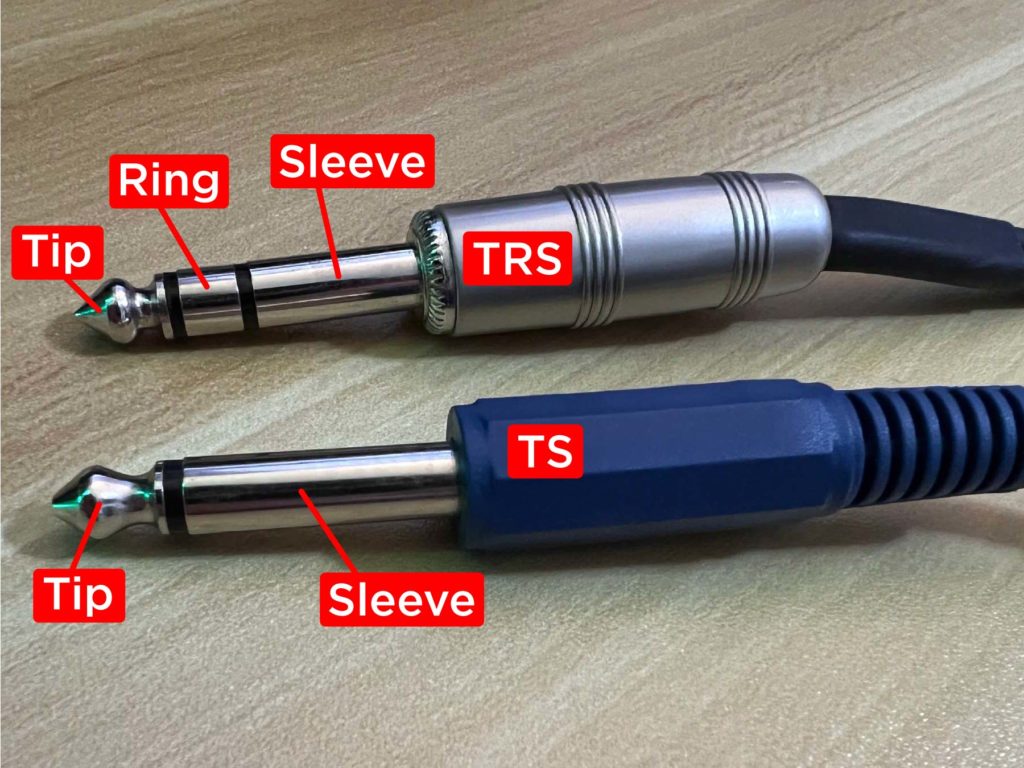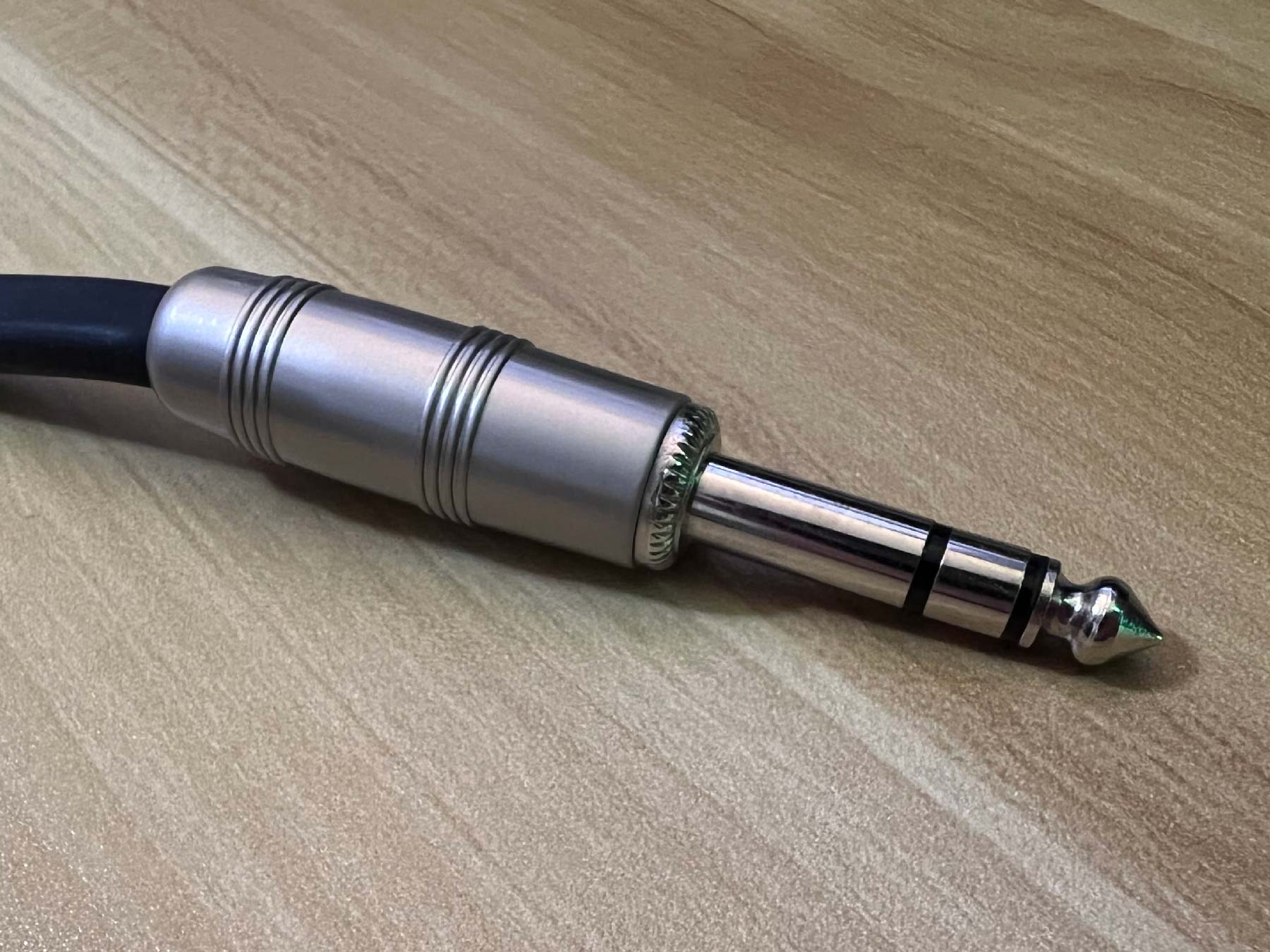What Are TRS Cables
TRS cables are often found in setups for audio production. The “TRS” stands for “Tip, Ring, Sleeve”. It’s easy to see why when you look at the plug at the end of one of these cables.
The TRS cable has three conductors. The three conductors are separated by an insulator, typically a small black band of resistant material. These insulators make it easy to visually identify the metal tip, metal ring, and metal sleeve.

Originally these cables were developed for use in phone switchboards. The cables were simply a tip and sleeve or TS cable. They have evolved since then adding the ring (TRS) as well as two rings (TRRS) in some cases. The TRS cable is prevalent in many areas such as professional audio production, used for certain instrument accessories like expression pedals, and even headphone or speaker cables.
TRS Use Cases
Because a TRS cable has three conductors they can be used for a few different things. One use of a TRS cable is to connect balanced equipment where the three conductors (tip, ring, and sleeve) act as a positive, negative, and ground connection.
Another use case for the TRS cable is in connecting unbalanced stereo equipment where the three conductors (tip, ring, and sleeve) act as left audio, right audio, and ground. For example stereo headphones!
There are many other use cases for TRS cables, they could be used in any application where you needed three conductors running on one cable. For example, a mono headset with a microphone. The TRS would be sending mono audio to the headphones, mono audio from the microphone, and a ground!
If you have a project or idea that could make use of a TRS cable and/or plug, be sure to use a multimeter to check the continuity from all conductors (tip, ring, and sleeve) to each wire so you know you are wiring things correctly.
A while back we had built a stereo audio splitter from a mini headphone TRS cable into four insert jacks. This allowed four people to listen to the same thing at once. The first wiring attempt had the left and right audio signals screwed up on a few of the jacks. Lesson learned, use a multimeter.
CONCLUSION
TRS cables are common in audio setups. The cables provide three different conductors which are the tip, ring, and sleeve of the jack. They’re easily identified by the dividing bands. When you need stereo unbalanced, or simple balanced connections between equipment reach for one of these cables.
